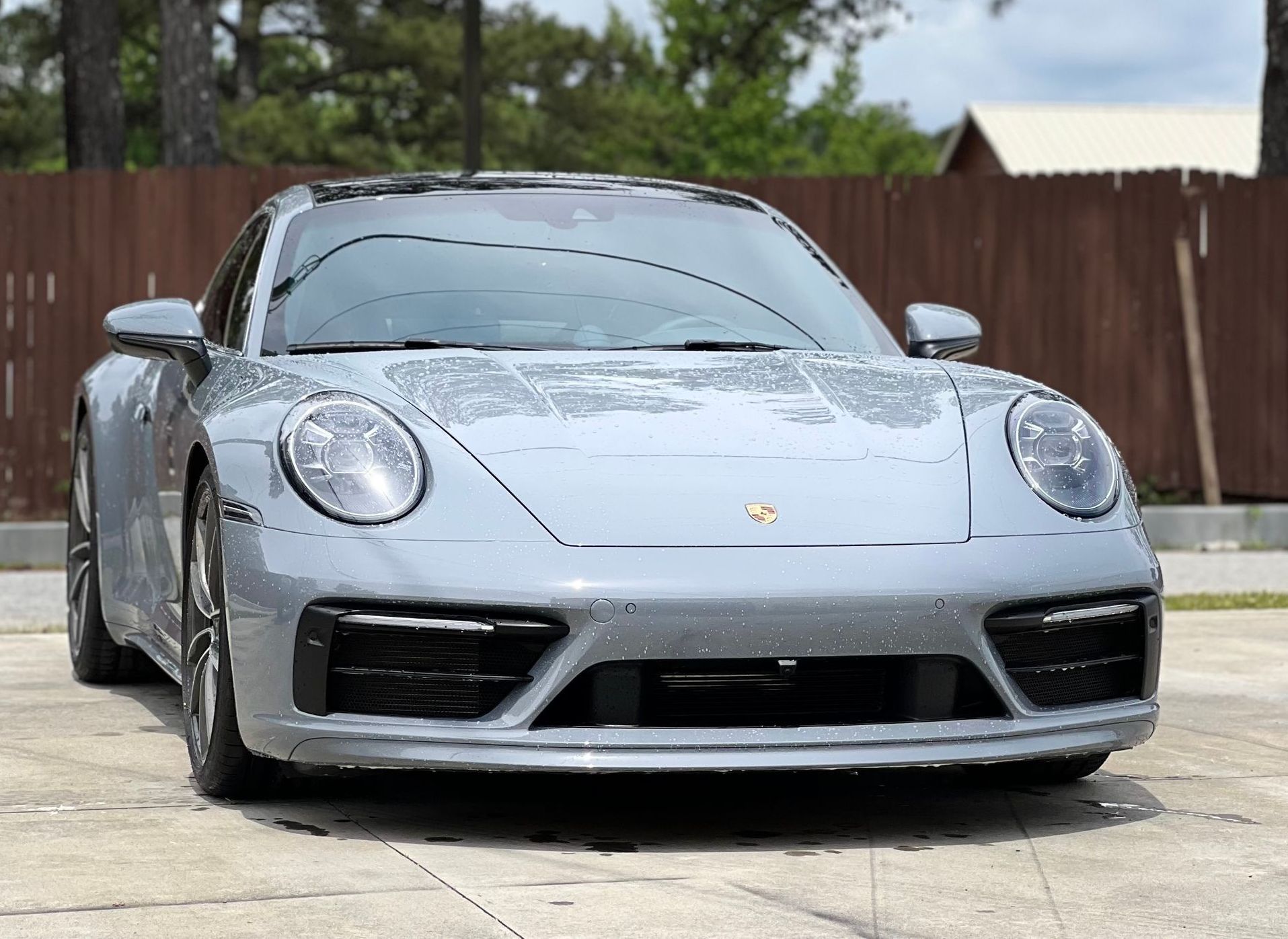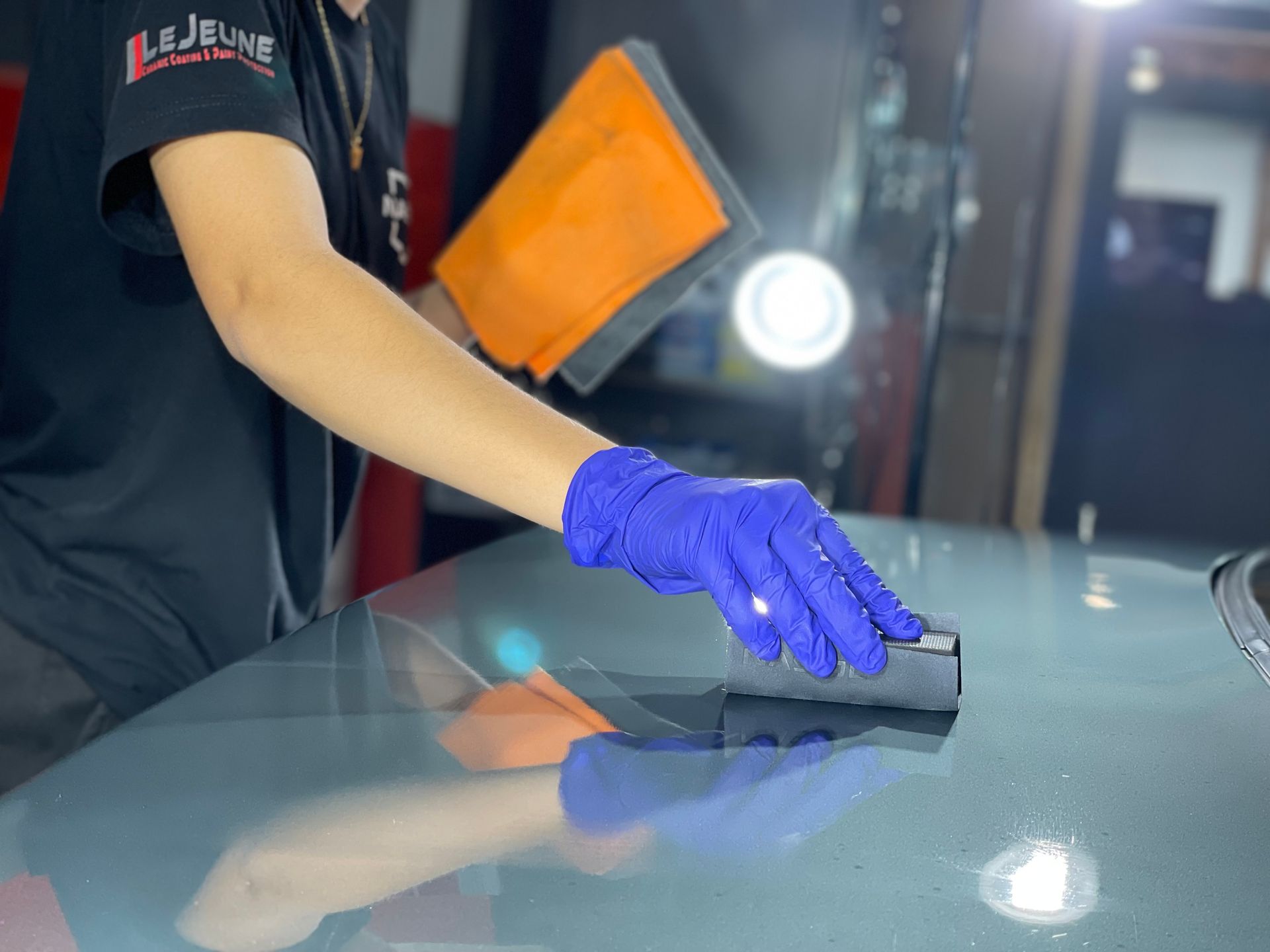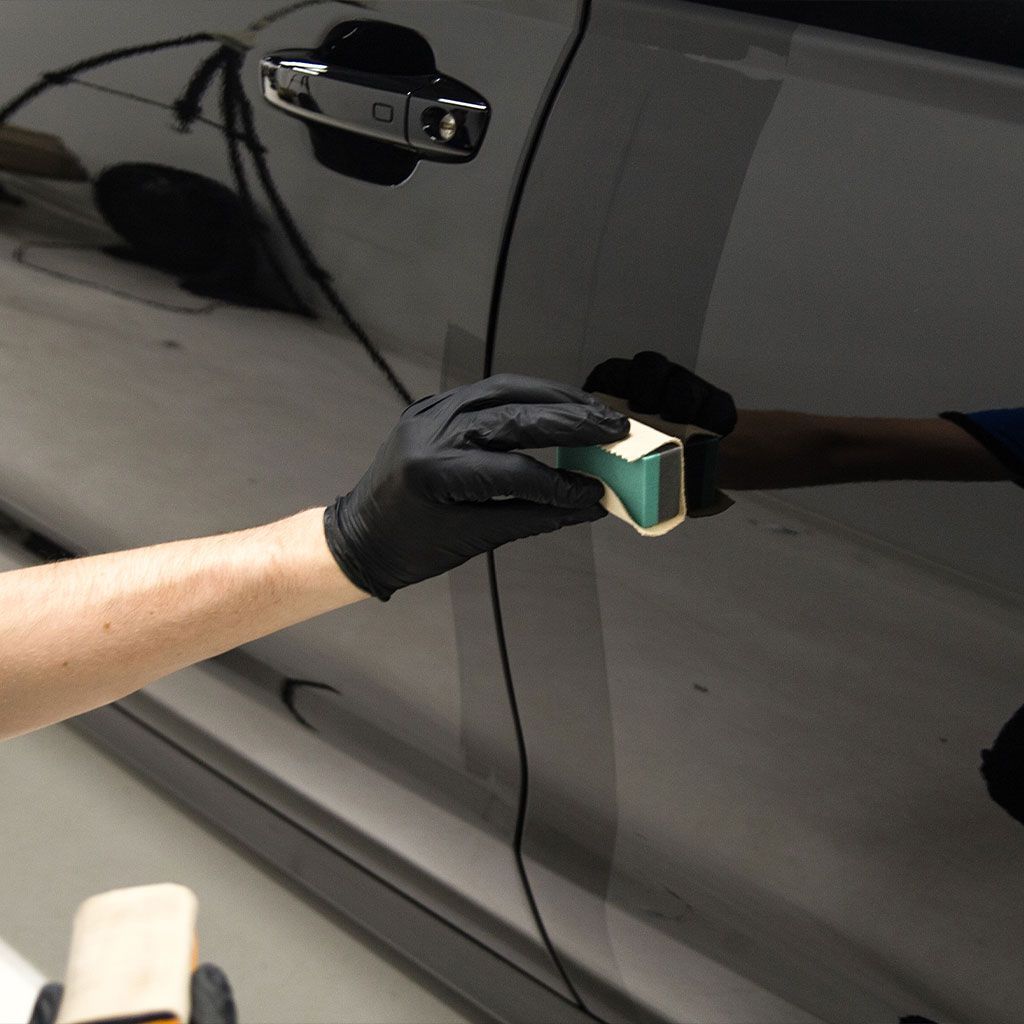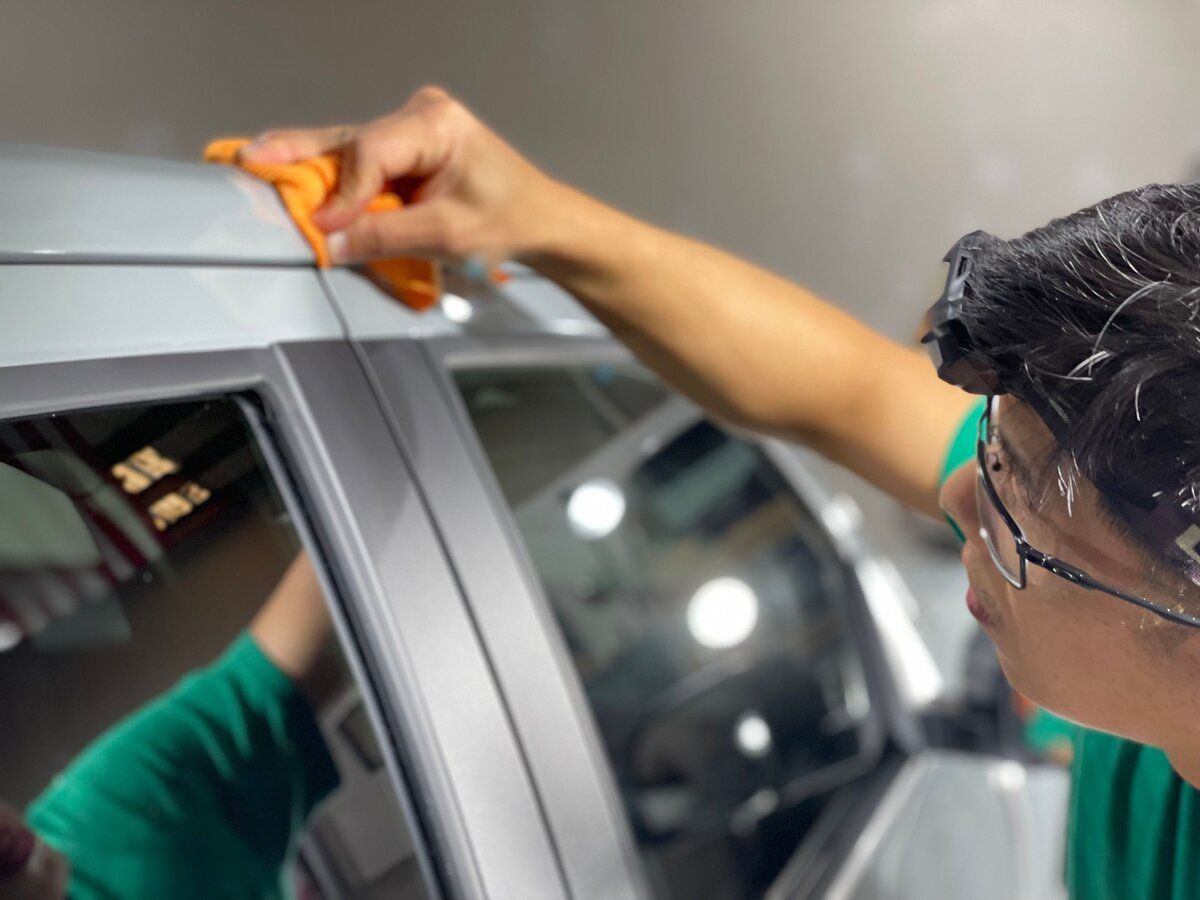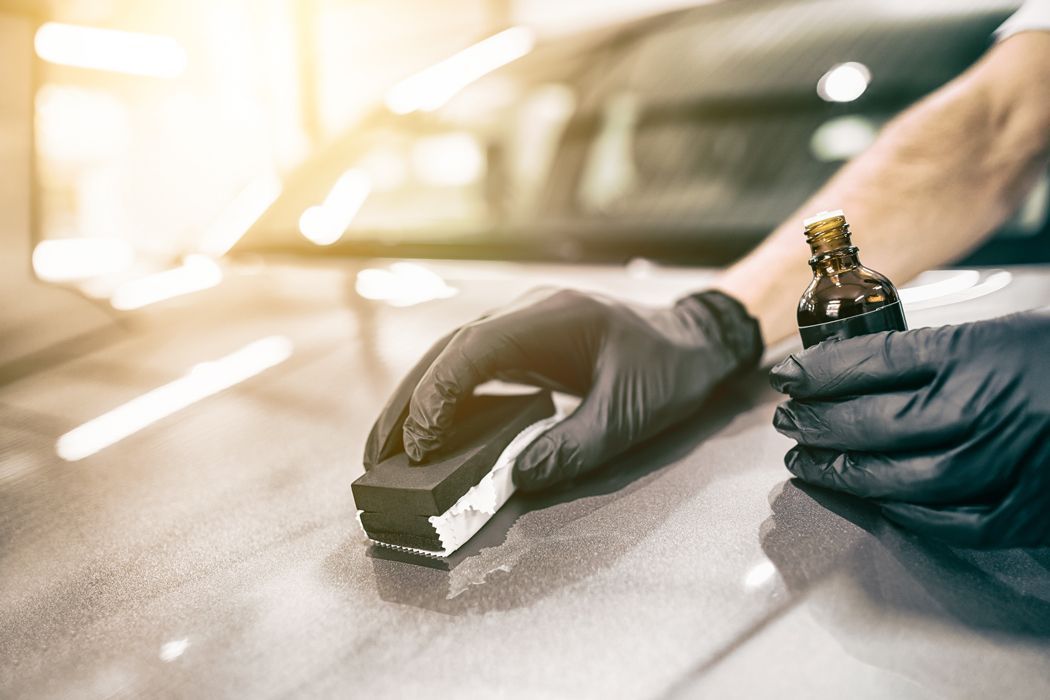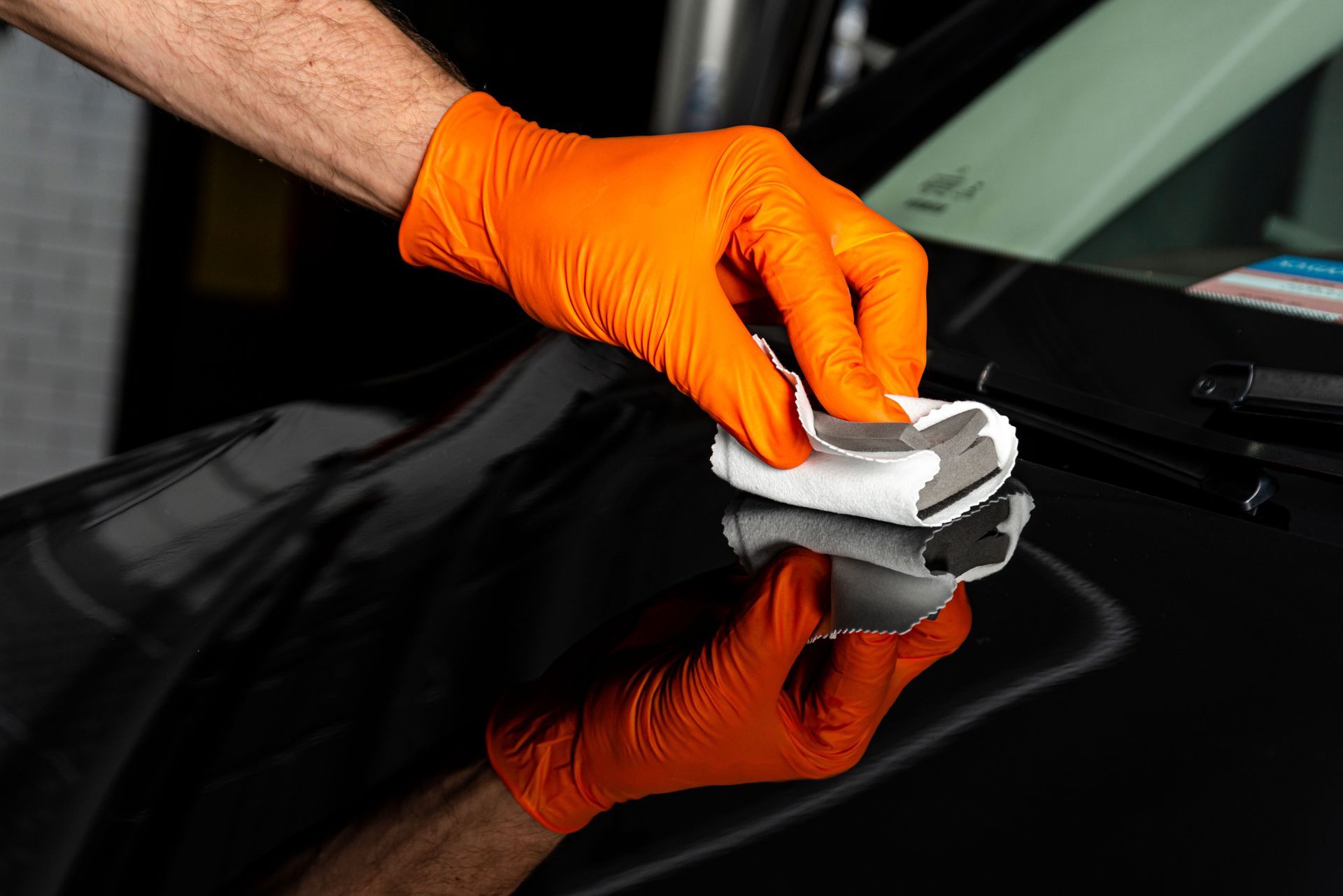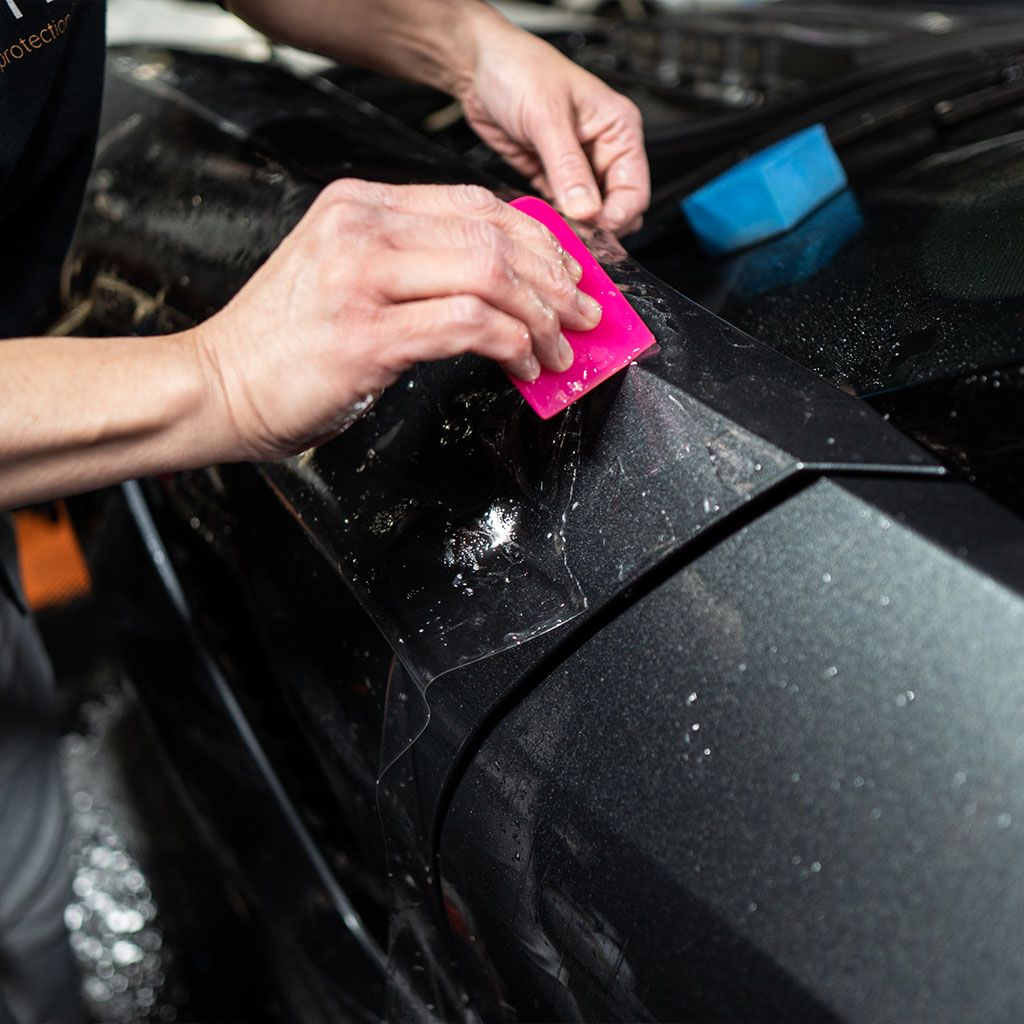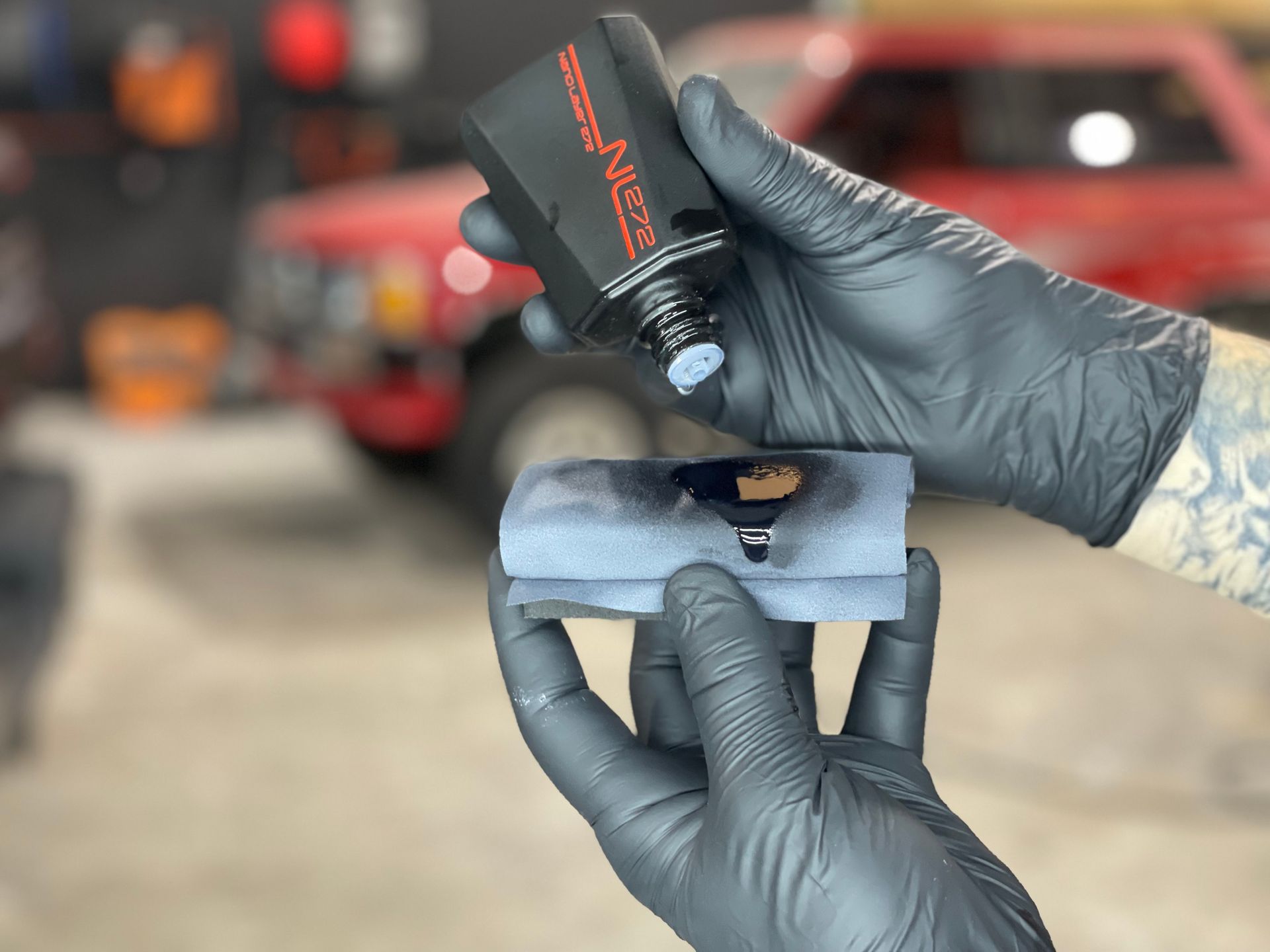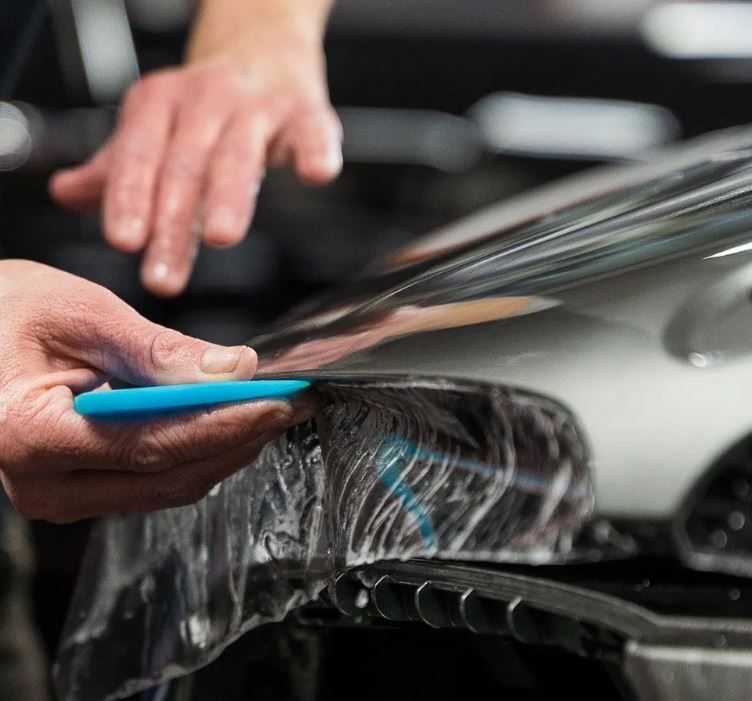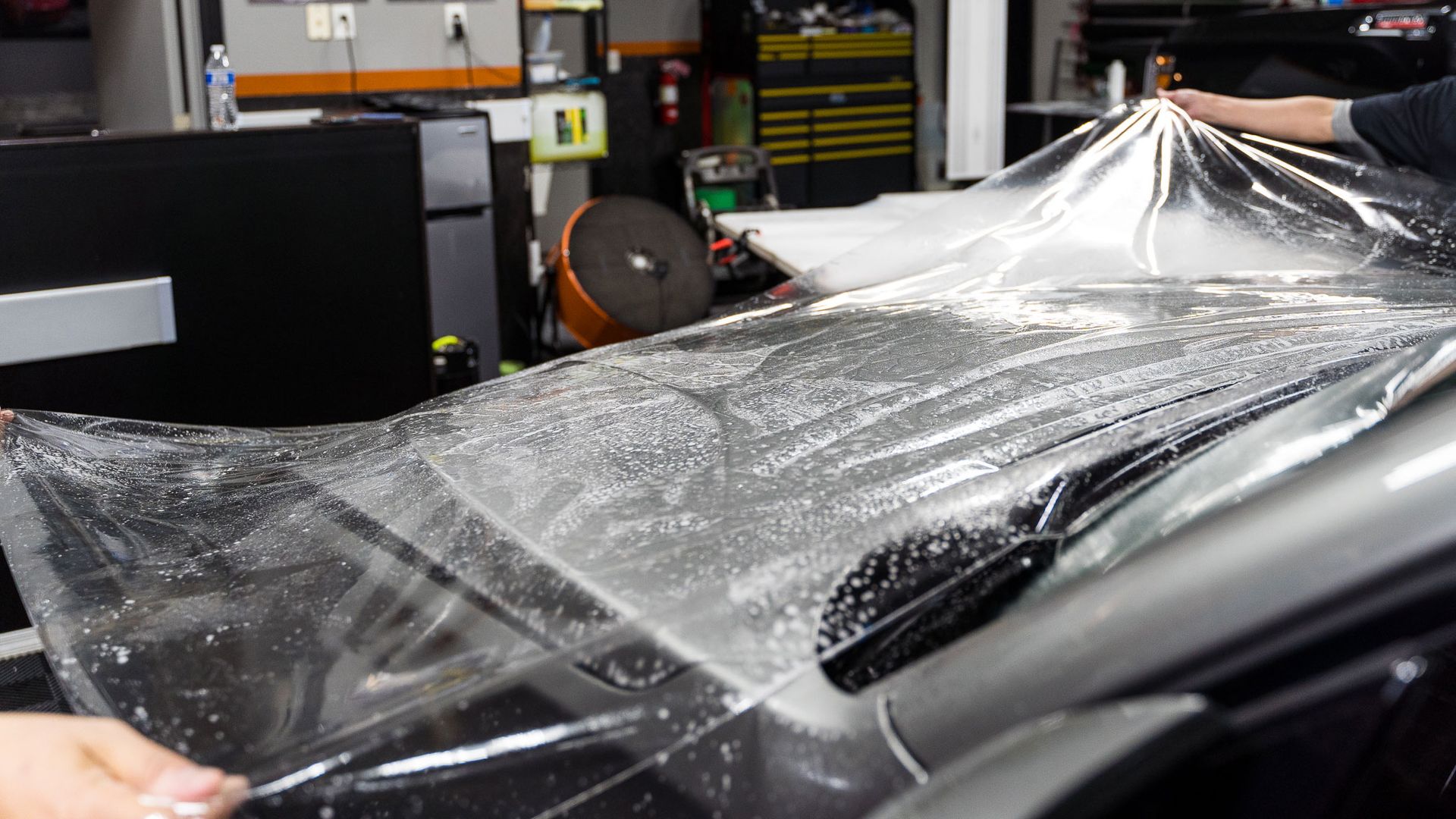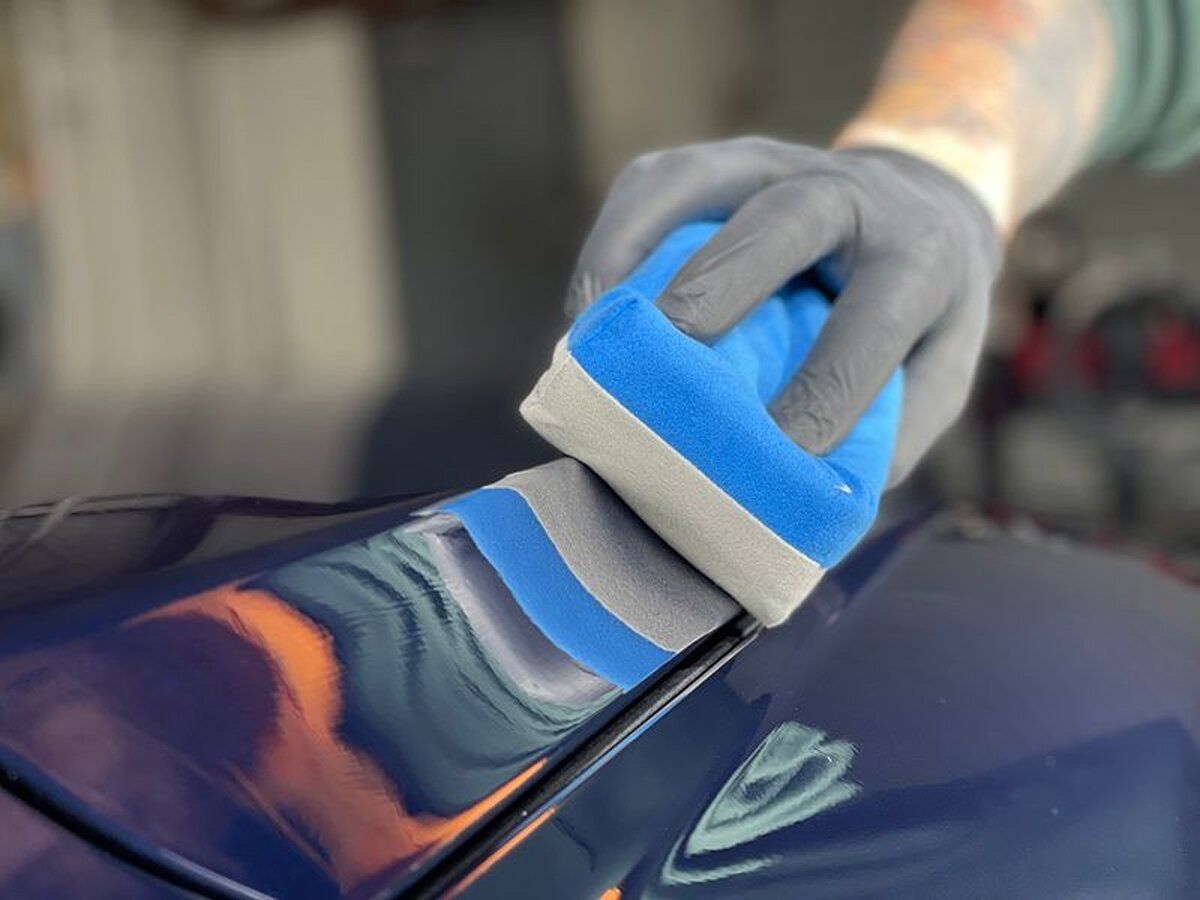Role of Ceramic Coatings: Preventing Oxidation and Rust for Long-lasting Durability
GET A QUOTECALL (770) 722-3486
When it comes to protecting your vehicle, you might think of regular washes and waxing as sufficient. But what if there was a way to create a much stronger shield that offers lasting defense against oxidation and rust? Enter ceramic coatings—essentially an advanced form of protection for your car’s paint that does more than just shine. With their ability to repel water, block harmful UV rays, and resist harsh chemicals, these coatings are not just for car enthusiasts; they offer anyone looking to preserve their vehicle’s appearance and longevity a smart solution. In this article, we’ll dive into how ceramic coatings work, their benefits, and why they could be the best investment you make for your car's care.
Ceramic coatings form a protective layer over a vehicle's paint, significantly preventing oxidation by sealing out oxygen exposure, which is essential in mitigating the oxidation process that leads to rust. By creating an airtight barrier, these coatings effectively delay the detrimental effects of environmental elements, thus maintaining the integrity and appearance of the vehicle's surface.
Preventing Oxidation and Rust With Ceramic Coatings
At the heart of ceramic coatings lies their remarkable capacity to create an impermeable shield that protects your vehicle's surfaces. Oxidation can quickly lead to rust, a process that starts at the molecular level. It occurs when oxygen molecules collide with metal, causing degradation over time. Picture it like a silent thief gradually taking away the integrity of your vehicle, bit by bit. A properly applied ceramic coating acts as a deterrent: it forms an airtight barrier that effectively blocks oxygen from reaching the underlying metal. This is akin to wrapping your car in an invisible cloak, safeguarding it against rust.
One notable aspect of ceramic coatings is their thickness, typically ranging between 1 and 2 microns. While this thickness may not seem substantial at first glance, it's strategically designed to optimize protection without compromising the surface's appearance. The layers work to seal off any potential pathways for moisture and corrosive agents that could cause oxidation. This means your car not only looks great but has a much-improved chance of maintaining its integrity over the years.
Research published in the Corrosion Science journal indicates that these coatings can withstand temperatures up to 1,200°C, contributing significantly to their protective capabilities against harsh environmental conditions. Furthermore, comparative analyses reveal that vehicles treated with ceramic coatings exhibit a shocking 75% reduction in rust formation over just twelve months when stacked against untreated surfaces.
Besides protecting from oxidation, ceramic coatings also feature hydrophobic properties that further help in maintaining the vehicle's appearance. The water-repelling nature allows rainwater to wash away dirt and grime effortlessly, functioning almost like nature’s own cleaning service. You might think of it as having your cake and eating it too—your car remains clean while fighting oxidation. All these benefits highlight the significance of investing in high-quality ceramic coatings for those looking for long-term solutions for their vehicles' care and durability.
Key Considerations for Effectiveness
Several factors play into how effective ceramic coatings are:
- Application Quality: An expertly applied coating maximizes longevity and protection.
- Regular Maintenance: Keeping up with routine cleaning can help prolong the life of the coating.
- Environmental Factors: Harsh weather conditions may require more frequent inspections.
With so many advantages at hand, it's clear that ceramic coatings serve as more than just another layer of polish; they offer a formidable line of defense against oxidation and rusting.
Understanding these key aspects positions you better as you explore mechanisms that enhance surface protection even further.
Surface Protection Mechanisms
Ceramic coatings provide surface protection through a unique blend of sealing and repelling properties, making them a popular choice among car enthusiasts and everyday drivers alike. When applied correctly, these coatings create a robust barrier on the vehicle's paint, effectively shielding it from a range of environmental hazards. The science behind them is fascinating—let’s explore the specifics.
- Hydrophobic Properties: One of the standout features is their hydrophobic nature, meaning they repel water rather than allow it to cling to the surface. Imagine being out in a torrential downpour: while you’re getting soaked, your car remains untouched as water beads up and rolls away, carrying dirt particles with it. This interaction between water and the coating is critical because water acts as a primary catalyst for rust formation, which can wreak havoc on your vehicle’s integrity over time. By keeping water off the surface, ceramic coatings have proven to be a significant line of defense against rust. Picture a freshly coated vehicle going through a rainstorm: water droplets simply slide off the car, leaving minimal residue behind. It’s like Mother Nature herself has lent your car a protective shield, enhancing not just its appearance but also prolonging its lifespan.
- Chemical Resistance: Additionally, ceramic coatings excel in providing resistance against various chemical contaminants such as bird droppings, tree sap, and road salts—all notorious for their corrosive properties. Without protection, these substances can bond chemically with paint and lead to damage if left too long. The beauty of ceramic coatings lies in their ability to minimize direct contact with these elements through a durable layer. They essentially act as a sacrificial barrier, ensuring that any harmful substances are less likely to reach the clear coat or paint underneath. With properly maintained surfaces, it becomes much easier to clean your vehicle after exposure to these harsh contaminants without worrying about damaging the paint finish. Regular maintenance cleans become a breeze; just rinse off the offending materials before they have a chance to wreak havoc.
- UV Protection: While UV protection is often advertised as one of the key benefits of ceramic coatings, it's essential to scrutinize these claims thoroughly. Many marketing departments might exaggerate how effectively these coatings protect against ultraviolet radiation. The primary value of these coatings still centers on preventing oxidation and rust, rather than serving as an impenetrable shield against all types of damage that UV rays might inflict. Experts argue that while some level of UV protection exists due to the coating’s thickness (generally around 1-2 microns), it may not suffice as a standalone solution against prolonged sun exposure. A comprehensive approach combining regular maintenance with strategic shade or protective covers is still advisable for optimal longevity.
Knowing how they protect is one thing; understanding the application process is crucial for realizing their full benefits. Up next, we will address the specific steps required for effective application.
Direct Application Steps
Applying ceramic coatings is not merely about slapping on a layer of protection; it requires precision and care to succeed. The first step, preparing the surface, sets the tone for everything that follows. Start by thoroughly washing the vehicle with a pH-neutral car shampoo. This step is crucial because any dirt, grease, or contaminants left on the surface can interfere with how the coating adheres to the paint. Picture this: trying to paint a wall coated in dust and grime; it simply doesn’t work! A good wash will leave your automobile primed for optimal adhesion. Once you’ve completed the wash, take a critical look at the paint's condition—it may need more than just soap and water if it's been subjected to the elements.
- Preparing the Surface: This leads us directly to paint correction. Consider your vehicle's exterior much like your own skin; just as you might exfoliate to remove dead skin cells, your car needs its imperfections addressed. Using a clay bar aids in removing bonded contaminants that washing alone might miss. After claying, polishing becomes essential to eliminate scratches and oxidation, restoring the paint's original luster. A well-prepped surface results in better adhesion for your ceramic coating. With a beautifully prepared vehicle shining under daylight, it’s time to move on to the actual application.
- Applying the Ceramic Coating: Here’s where excitement builds; applying the ceramic coating itself can feel rewarding! Begin by dispensing a few drops of the solution onto an applicator pad. When you spread it across a small section of your vehicle, employ a crosshatch pattern; this method helps ensure complete coverage without any neglected corners. The goal is to create a consistent, even layer that hugs every contour of your vehicle’s surface. As you carefully cover each section, remember that patience here pays off in dividends down the road.
- Curing Process: Now comes one of the most vital yet often overlooked stages: the curing process. Allow the coating to cure following manufacturer instructions—often about 24 to 48 hours—without exposing it to moisture or harsh environmental conditions. Keeping your vehicle indoors during this period is crucial as it protects against dust particles and other contaminants that could settle onto your newly applied coat.
Imagine waiting for bread dough to rise, only to have flour and crumbs fall into it; similarly, allowing dust to touch your curing coating could ruin all that hard work! With sufficient curing time behind you, you'll be ready to explore how these coatings stand up against environmental challenges, safeguarding your investment even further.
Resistance to Corrosion and Chemicals
Beyond just being a shiny surface treatment, ceramic coatings are remarkable in their capacity to shield vehicles from the elements. They act like an armor that protects against oxidation and serves as a formidable barrier against corrosive agents. The silica-based formulation creates a semi-permanent shield, which is quite impressive when you think about it. Essentially, this means that normal wear and tear caused by rain, road grime, or even tree sap becomes significantly less harmful.
Imagine you're driving down a tree-lined street after fresh rainfall. Water droplets mix with drained bird droppings splattering on your car's hood; without proper protection, such incidents could lead to unsightly stains and damage to your paintwork. Thanks to ceramic coatings, these surfaces repel such contaminants, allowing for easy clean-up and reduced risk of corrosion. It’s as if your car has its own self-defense system!
This protective nature extends to acid rain—a phenomenon more common than many realize. The chemicals present in acid rain can degrade untreated paint; however, with ceramic coatings in place, your vehicle enjoys an added layer of protection. Understanding how these layers of protection work helps us appreciate their crucial role in today's environment. Yet, sustaining that performance calls for some attention. Next, we will explore essential strategies to maintain this impressive durability over time.
Longevity and Maintenance Tips
Proper maintenance is essential to ensuring the longevity of ceramic coatings. Think of your vehicle’s coating as an invisible shield, protecting it from the elements and road grime. However, this shield needs your help to stay effective. Regularly washing your vehicle using a pH-neutral shampoo is a vital first step in this process. Unlike harsh soaps that can break down protective layers, pH-neutral options are gentle yet effective at cleaning without compromising the ceramic coating.
If you encounter stubborn dirt or grime clinging to the surface, consider using a high-pressure washer. Just make sure to maintain a safe distance—too close and you risk damaging the very layer meant to protect your car. A simple routine wash can keep your vehicle looking pristine and prolong its protective qualities significantly. When it comes time to dry your freshly washed car, you might think any old towel will do—but here’s where microfiber cloths come into play. Their soft texture makes them ideal for this task, creating a polished finish that really reflects that "just detailed" look.
Keep a good stash of microfiber cloths handy; they’re a small expense with enormous benefits! Another critical aspect of maintaining ceramic coatings is understanding when and how to reapply them. Depending on the specific product used, a reapplication every 1 to 2 years may be necessary to sustain optimal protection levels. Over time, exposure to UV rays and weather conditions can wear down the initial application. Thus, staying ahead of potential degradation ensures that your coating remains hydrophobic—repelling water effectively and preventing contaminants from adhering to your paintwork.
Interestingly enough, there are now advanced maintenance products available that make caring for your ceramic coating even easier. One such option is ceramic spray sealants, which can be applied every few months. These sprays refresh and fortify the existing layer without the need for a complete reapplication. It’s like giving your car an extra layer of armor against nature’s forces without much effort on your part.
Integrating these products into your car care routine can save time in the long run while effectively maintaining the bright, glossy appearance of your vehicle. By following these maintenance tips diligently, you're not only ensuring long-term protection but also instilling confidence that your investment remains intact for years to come. Next, we will look at how these protective measures stack up against more traditional approaches in rust prevention.
Comparing to Traditional Rust Prevention Methods
A common method many people are familiar with is waxing their vehicles. Waxing is somewhat effective, but it's a temporary solution that typically lasts only two to three months at best. Frequent applications are necessary, especially for those in areas exposed to harsh weather conditions. Each wash or exposure gradually removes that wax layer. In contrast, ceramic coatings create a robust protective barrier on your vehicle's surface that can last anywhere from one to five years when applied correctly. It practically transforms your car into an armor-coated fortress against the elements.
Another option is traditional rust inhibitors, which might offer slightly more durability—lasting from six to twelve months. However, they also have limitations. Their effectiveness varies depending on the product, and regular reapplication is necessary to maintain any level of protection. Furthermore, factors like extreme temperatures and moisture can significantly degrade their efficacy over time.
Effectiveness: A Side-By-Side Comparison
As illustrated in the table above, ceramic coatings stand out not just for their longevity but also for their superior resistance to environmental aggressors such as UV rays and chemicals found in road salt or industrial fallout. With ceramic coatings, a hydrophobic effect comes into play, allowing water to bead up and roll off effortlessly, minimizing corrosion risk. This makes routine cleanings faster and easier since dirt is less likely to stick.
Ultimately, while traditional rust prevention methods have their place, they lack the convenience and durability that ceramic coatings provide. Investing in a ceramic coating means lower maintenance frequency and increased peace of mind knowing your vehicle's paint is safeguarded against foreseeable challenges. By shifting our focus to modern solutions like ceramic coatings, we can ensure our vehicles remain protected and beautiful for years ahead. Overall, embracing the innovative technology of ceramic coatings not only enhances your vehicle's appearance but also prolongs its lifespan against damaging elements.
The Ultimate Protection for Your Car’s Finish
Protect your car's exterior with LeJeune Ceramic Coating & Paint Protection in Marietta, GA. Our premium ceramic coating services provide a strong, hydrophobic layer that shields your vehicle from dirt, water, and contaminants, keeping it cleaner and more vibrant for longer. With our expert application, your car will not only shine but also benefit from enhanced durability and long-lasting protection. Contact us today to schedule your appointment and ensure your vehicle stays in pristine condition all year round.
